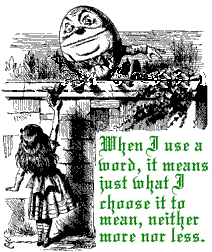
Another thing I found interesting at the conference was a growing overlap between ASLE and what goes on under the rubric of “environmental communication.” (The COCE conference, incidentally, is at the end of this month.) The plenary on “New Publishing Environments: The Changing Landscape of Reading” was a particularly clear instance of this. It featured award-winning New York Times environment reporter, author, and blogger Andrew Revkin, with brief responses by Orion‘s Chip Blake and Milkweed‘s Daniel Slager. Revkin’s talk was a rich and upbeat summary of the possibilities of the new networked environment for environmental communication; Slager’s comments were a relatively downbeat assessment of the crisis of publishing and the perils of the digital era for reading and writing; and Blake’s comments were mainly a somewhat ambivalent report of the ways Orion, the magazine and the Society, are responding to the crisis. (David Suzuki, the Andy Revkin of a previous and more slow-media generation was in the audience and I wanted to ask him his thoughts about it all, but he left before I could get to him.)
Revkin focused much of his talk on his blog, Dot Earth, which really has become a ‘first stop’ source on all manner of environmental news. Revkin argued that as the news has gone digital, it has also gone global and interactive (his blog gets responses from all over the world, with rich conversations generated in the process), as well as contestable and dynamic (we’ve gone from Walter Cronkite’s “And that’s the way it is…” to a never-ending Deleuzo-Guattarian ellipsis “. . .”, and, a little less reassuringly, to a situation where, in his words, “For every Ph.D., there is an equal and opposite Ph.D.”). Stories, which according to Revkin take the form “Did you hear that…?”, will always be with us, but the storyteller, he suggested, will not be, or at least has become multiplied and fragmented (just as Foucault, Barthes, and others pointed out with their “death of the author” pronouncements, well, three or four decades ago). Both Blake and Slager supported this death of the book/author thesis with factoids about the vastly increased death rate of magazines — e.g., that 29 magazines of over 100,000 readers have gone under since March 2008 as a result of conglomeration, loss of advertising revenues, and increased production and distribution costs.
To a commenter’s suggestion — following up, I’m guessing, on Slager’s more doom-laden comments — that this somehow signifies the end of literary art and the blurring of the distinction between information and literary art, I would respond that literary art can and is making a transition to digital media, and that the blurring of information and art has always been with us — in fact, in other media (visual, audio, performative) it’s never really been there to start with. Or have I just been reading too much Latour, who would suggest that the dualities of orality and literacy, like those of science and politics, sacred and profane, and so on, are specifically modern distinctions, and that before/outside of modernity it’s all a big bundle of possibilities (his term is “plasma”) which get crafted into specific assemblages through the network-building of very particular cultural-ecological practices?
Revkin’s blog, like many blogs, is primarily informational, not artistic. But art there is, presented in innovative ways like this and this, and there’s no inherent reason why creative writing and the crafting of poetic, artistic, performative, and communicative worlds couldn’t be present in a digital medium. I like books, too — love them, have shelves of them climbing my walls — and for me Kindle and its soon-to-be-released competitors will never replace them physically and texturally. But skin, flesh, folds, bodies and limbs in motion (and in recline) carrying and holding objects made of things mixing felt and imaged beauty (like a good book cover) and symbolic meanings (squiggles on a page) will continue in other forms. Do we need to lament the decline of the book when there are so many rich possibilities, not to mention other obviously important tasks, staring us in the face? And as for magazines, they’re already online — not so much literally (though that’s true, too), but in their format, their particular mixture of columns, pages, image-text rhythms, and the rest.
A visit to Victoria’s (wonderful) Royal British Columbia Museum reminded me that even museums are learning from digital media; their organization mimics a great set of well crafted web pages, with links, simulations, hands-on object pieces, etc.
One of the more striking pieces there is a Nisga’a white man mask, with stubbly fur for facial hair, that seems to radiate a deathly, smallpox-carrying emptiness like a laser out of the hollow of its eyes. (The photo below doesn’t convey this nearly as well as the original.)








